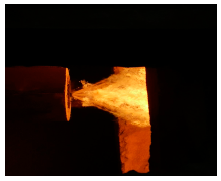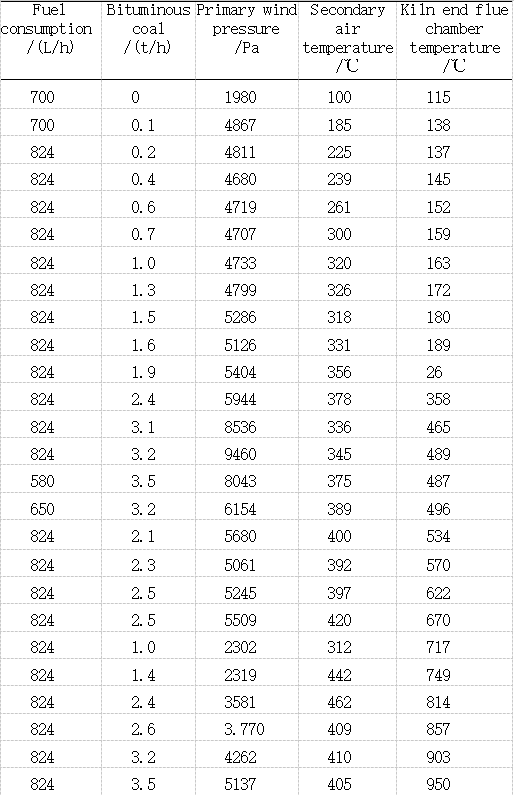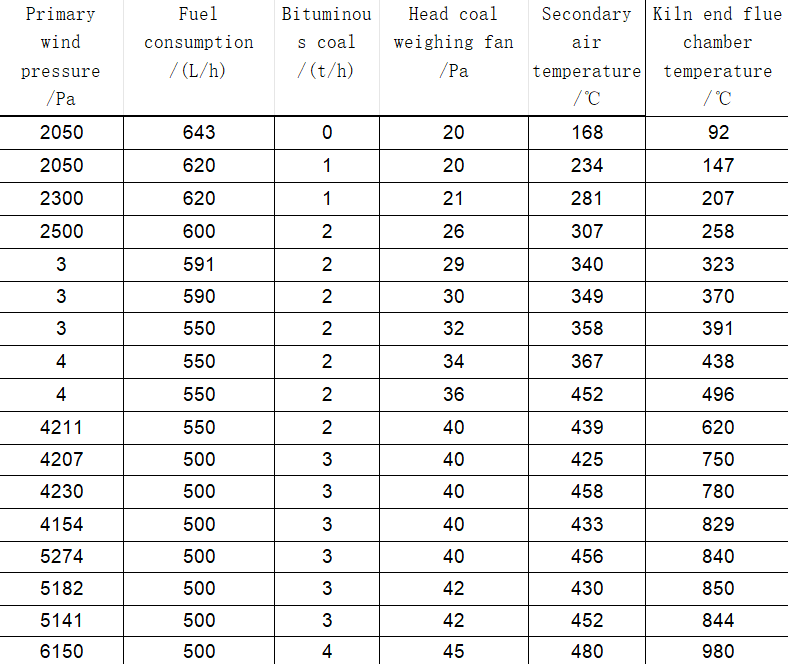Views: 0 Author: Site Editor Publish Time: 2023-11-15 Origin: Site








1. Introduction to Micro Oil Ignition Technology
The principle of micro oil ignition and temperature rise technology is based on the principle of a dual fluid spray gun. The high-speed jet of compressed air and then pressurized gas is used to directly crush the fuel, atomize it into ultrafine oil droplets for combustion. At the same time, the heat generated by combustion is used to heat the fuel in the initial stage and later stage, and expand its capacity, completing the evaporation and gasification of the oil droplets in a very short time, allowing the oil gun to directly burn the gas fuel during normal combustion, which greatly improves combustion efficiency and flame temperature.
The principle of micro oil ignition and temperature rise technology is based on the principle of a dual fluid spray gun. The high-speed jet of compressed air and then pressurized gas is used to directly crush the fuel, atomize it into ultrafine oil droplets for combustion. At the same time, the heat generated by combustion is used to heat the fuel in the initial stage, expand its capacity, and later stage, completing the evaporation and gasification of the oil droplets in a very short time, allowing the oil gun to directly burn the gas fuel during normal combustion, This greatly improves combustion efficiency and flame temperature. The flame after gasification combustion has extremely strong rigidity, with a propagation speed that exceeds the speed of sound. The flame is completely transparent (blue at the base, transparent white in the middle and tail), and the temperature at the center of the flame can reach up to 1500~2000 ℃. The high-temperature flame formed by the combustion of the micro oil gasification oil gun causes a sharp increase in the temperature of coal powder particles, fractures and pulverizes, and releases a large amount of volatile matter to quickly ignite and burn, achieving staged combustion of coal powder. The combustion energy is gradually amplified, achieving the goal of ignition and accelerating coal powder combustion, greatly reducing the ignition energy required for coal powder combustion, i.e. fuel consumption. The micro oil ignition heating technology aims to reduce start-up and low load stable fuel consumption, and is currently a very effective means of saving fuel by igniting and heating cement kilns, with good economic and social benefits. It is understood that this technology has a wide range of applications in the cement industry, but its application in anthracite cement enterprises has not been reported yet.
2. Preparation work for ignition of anthracite coal with micro oil
Through data testing in our company, it was found that the following optimizations are needed for ignition parameters:
(1) During the ignition and heating of the rotary kiln, it is necessary to improve the atomization effect of diesel and increase the contact area between diesel and coal powder, which is beneficial for the combustion of anthracite.
(2) Based on the difficulty in ignition of anthracite coal, in the early stage of heating up the rotary kiln, combined with the characteristics of refractory materials, the temperature of the kiln head should be increased as much as possible. When introducing coal powder, it is more conducive to combustion.
(3) To reduce diesel consumption, the heat required for heating up the rotary kiln needs to be provided by the combustion of coal powder. While ensuring the temperature of the kiln head, it is advisable to use coal oil co firing as early as possible for heating up the kiln.
(4) Adjust the air pressure and volume of the primary fan, increase the jet velocity and amount of primary air, shorten the flame length, and facilitate the co combustion of coal and oil.
3. First ignition test of smokeless coal with micro oil
Combining the characteristics of low volatile content and high ignition point of anthracite, our company follows the principle of "slow heating, no turning back, no interruption, and gradual heating from the kiln head to the kiln tail" during the heating process. This is to effectively ensure the combustion of coal powder, appropriately increase the temperature of the secondary air at the kiln head, and create good conditions for coal powder combustion. When using fuel in the initial ignition stage, the flame is strong and powerful (see Figure 1), and the heating curve is smooth.

Figure 1 Micro oil ignition flame
When the temperature at the beginning and end of the kiln
rises to around 150 ℃, start preparing for oil coal co firing. The initial coal injection rate is set at 0.1 t/h, and the coal injection rate is gradually increased according to the heating curve, while increasing the primary air pressure to ensure a reasonable match between the primary air and coal injection rate. The data of micro oil ignition test are shown in Table 1.

Table 1 Data of the First Anthracite Micro Oil Ignition Test
After the temperature reaches 950 ℃, turn on the high-temperature fan, grate cooler, kiln main motor and other equipment. When the temperature reaches 1050 ℃, start the feeding operation. After feeding, stop fuel injection when the secondary air temperature reaches 600 ℃ or the feeding amount reaches 300 t/h.
Due to the low volatile content of anthracite, it is not easy to burn at low temperatures, and the flame is longer. Therefore, the ignition of anthracite micro oil during the heating process of cement kiln drying is more likely to cause the flame to extinguish.
In the early stage of oil coal co firing, due to the low temperature inside the kiln and the unstable airflow in the preheater at the kiln tail, detonation may occur, which can easily cause the flame at the kiln head to extinguish. At this time, it is not advisable to increase the amount of coal powder used. Try to increase the temperature of the secondary air at the kiln head as much as possible, and then slowly increase the amount of coal injection. Due to the low combustion rate of anthracite, while increasing the coal injection rate, attention should be paid to the secondary air temperature, preferably maintained above 350 ℃, for easy combustion and flame extinguishing.
When the temperature at the kiln head rises to 350 ℃ and the temperature at the kiln tail is around 650 ℃, technicians attempt to reduce the oil level of the oil gun to 580 L/h. However, due to the difficulty of burning anthracite, the flame is extinguished. When the oil level of the oil gun was adjusted to 650 L/h, the flame still went out. Finally, the oil level of the oil gun was adjusted to 824 L/h to stabilize the flame. The main reason for the analysis is that the ignition point of anthracite coal is relatively high. Even if the temperature at the kiln tail rises to 650 ℃, with an increase in coal powder usage and a decrease in oil volume, the combustion of coal powder is insufficient, and the fluctuation of secondary air temperature and pressure at the kiln head increases, leading to flame extinguishing. Therefore, reasonable control of coal injection rate, fuel injection rate, secondary air temperature, and primary air fan pressure to match them is the key to ignition and temperature rise.
Additionally, it should be noted that before ignition, the remaining coal powder in the coal conveying pipeline of the rotary scale at the kiln head must be cleaned thoroughly. Otherwise, during the mixed combustion of oil and coal, it is also easy to cause the flame to extinguish due to excessive instantaneous coal feeding.
This smokeless coal micro oil ignition has heated up for a total of 19.05 hours, consuming a total of 12 tons of diesel. Compared with another production line (without using micro oil ignition technology) which has heated up for 22.82 hours and consumed 21 tons of diesel, the fuel consumption is 0.62 t/h and 0.92 t/h, respectively, and the fuel savings can reach 32%.
3. Second ignition test of smokeless coal with micro oil
Based on the first anthracite test, our company conducted the second anthracite micro oil ignition test. This experiment learned from the first experiment and controlled the fineness of coal powder below 2.0% (3.0% in the first experiment). At the same time, the pressure of the Roots blower for feeding coal to the kiln rotor scale was optimized and adjusted, and the secondary air temperature was increased to ensure the combustion of anthracite. The data for this experiment are shown in Table 2.

Table 2 Data of the Second Anthracite Micro Oil Ignition Test
The second ignition of anthracite micro oil was optimized and adjusted in terms of operating parameters, and the entire heating process was relatively smooth. The total heating time for this ignition of anthracite micro oil was 31.53 hours, with a cumulative consumption of 17 tons of diesel and a fuel consumption of 0.54 t/h. Compared to the fuel consumption of 0.95 t/h for ignition without anthracite micro oil on another production line, the fuel savings can reach more than 43%.
4. Ending
When igniting and heating smokeless coal with micro oil, the fineness of coal powder can be appropriately controlled. During the heating process, the temperature at the kiln head should be raised first, and then the temperature at the kiln head and tail should be raised together. Especially when the temperature at the kiln end reaches above 800 ℃, due to the increase in the amount of coal used, if the temperature at the kiln end is too low, poor combustion of coal powder can easily cause the flame to extinguish. Considering the high ignition point of anthracite coal, it is necessary to increase the kiln head temperature appropriately (around 400 ℃) in order for the coal powder to burn well, otherwise there may be detonation and flameout phenomena.
After two rounds of smokeless coal micro oil ignition and temperature rise debugging, our company has mastered the rules of smokeless coal micro oil ignition and the optimization and adjustment plan of ignition temperature rise parameters. Compared with the origin fire heating system, the smokeless coal micro oil ignition technology can save more than 40% of fuel, with a heating time of about 20 hours per ignition. The diesel cost is calculated at 8000 yuan/t, and a single cost savings of about 60000 yuan can be achieved. Twice ignition can recover the cost, and the economic benefits are obvious.
